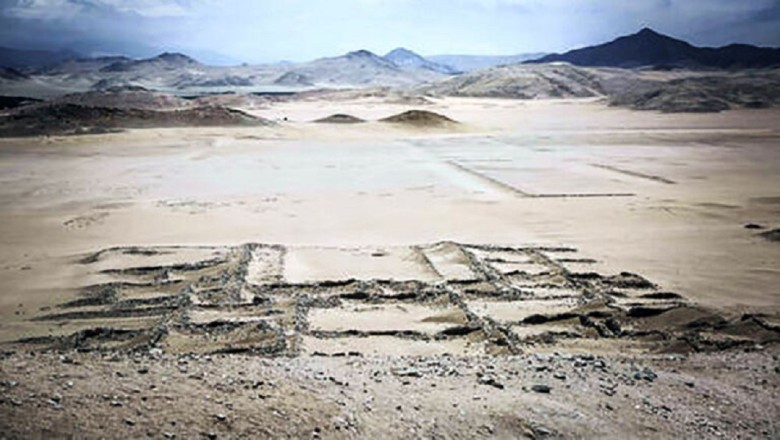
views
Experts discover a massive 2,300-year-old structure in the desert, causing a stir.
As old as time
The Chankillo complex, built approximately 2,300 years ago, continues to captivate and inspire the imagination. Since the 19th century, modern people have been impressed by these incredible stone towers and have wondered about their purpose and significance.
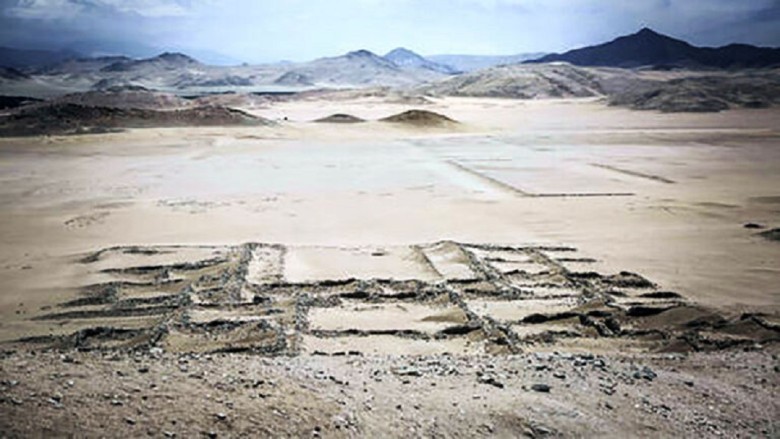
Despite the attention it attracted, the true function of these structures remained a mystery for a long time. It wasn't until a comprehensive study in the 21st century that researchers were finally able to solve the puzzle. This discovery underscores the importance of continuous exploration and research to understand our rich past.
Research in ruins
"It seems extraordinary that no one really knew what [the towers] were for such a long time," said Professor Clive Ruggles from the University of Leicester to the BBC in 2007. Considering how impressive the site actually is, this fact becomes even more astonishing.
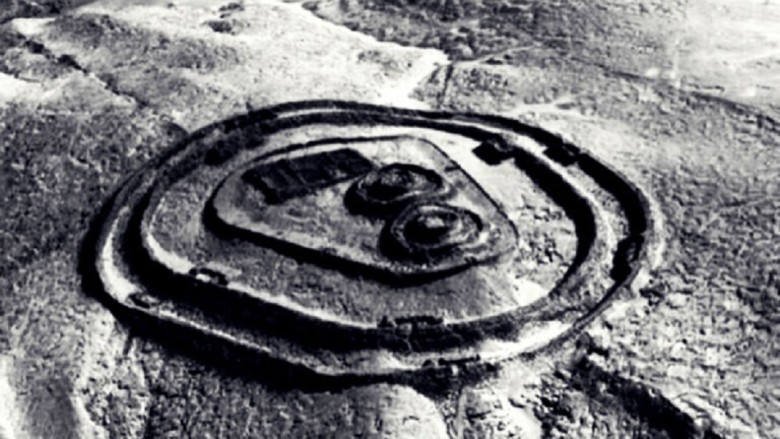
"I was completely astonished when I first saw them," Ruggles added. He certainly wasn't the only one who felt that way. Over the years, the towers have amazed many people.
Towering success
The Chankillo complex is located in the Casma Valley desert, along the coast of Peru. To give you an idea of its extraordinary size, it covers an impressive area of 1.5 square miles - equivalent to approximately 726 football fields.
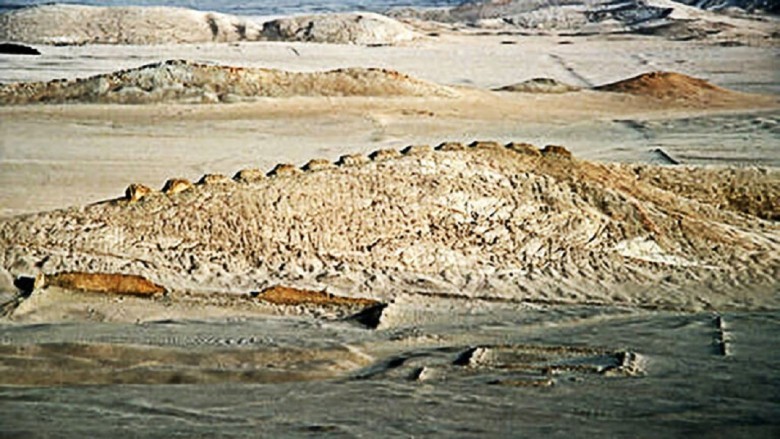
The enigmatic 13 towers that rise on the site are also of considerable size, raising many questions about their function and origin. These structures are not only impressive, but also witnesses of a past civilization. It is a place that, despite its visible size, still holds many secrets."
13 towers
The towers are located on the ridge of a small hill in Chankillo. They are all rectangular in shape and range in height from 6 to 20 feet. Although thousands of years old, they are still in relatively good condition, highlighting their craftsmanship and durability.
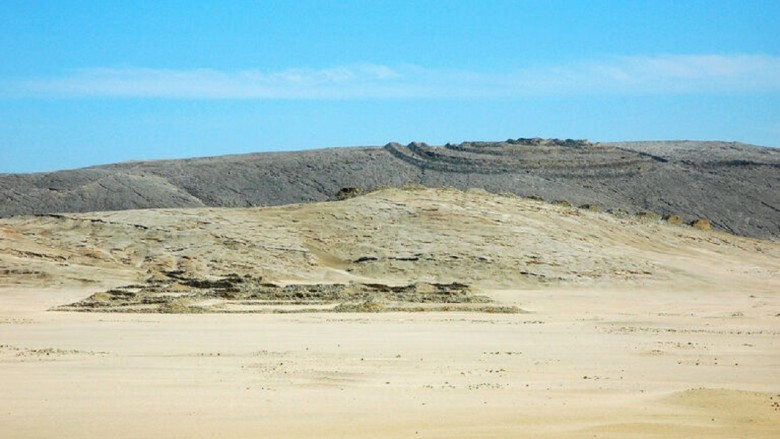
However, what is particularly fascinating is the arrangement of the towers and how to get to them. Their unique placement and structure pique the interest of archaeologists and visitors alike.
Top of the tower
If you look closely, you will notice that the towers are arranged from north to south along the ridge. There are also evenly spaced distances between each one. This particular arrangement creates a striking, jagged panorama that provides a clue to the site's previously unknown purpose.
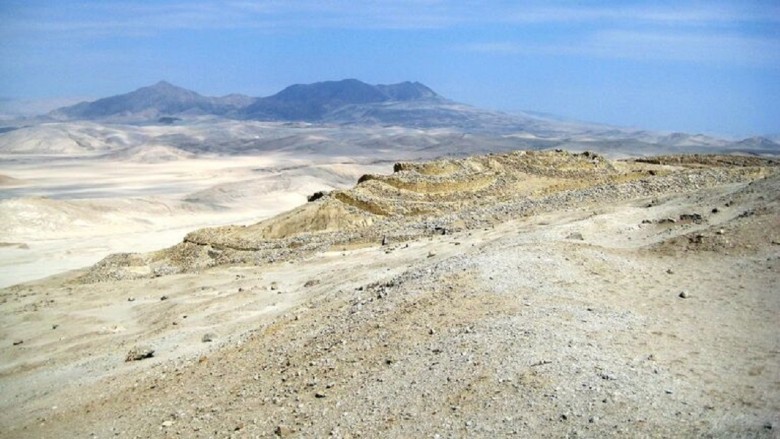
Surprisingly, there is even a straightforward way to reach the top. The thoughtful structure and planning of the complex indicate the foresight and skill of its builders.
Secret stairs
Yes, each tower has two carved stairs. One could ascend these steps to the top of the tower and likely enjoy an impressive view.

However, providing people with a better view of the horizon is not the main reason for the existence of the towers. There must have been a deeper, perhaps cultural or functional purpose for why these towers were originally built.
Fortress of Battle
As mentioned earlier, Chankillo first gained public attention in the 19th century. Since then, many experts and historians have speculated about the original purpose of the site. Some believed, for example, that the complex could have been a place for ritual combat or battles.
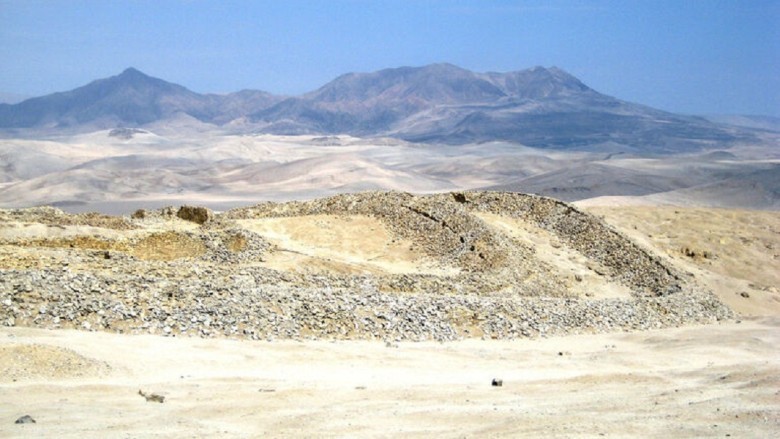
There were also many indirect clues and discoveries that supported this theory. The mysterious nature of Chankillo has led to a variety of interpretations and hypotheses over the years.
Defensive Positions
Firstly, the site consists of three buildings. Each of these buildings is surrounded by walls that rise up to 20 feet high. While archaeologists may not have known exactly why the buildings were originally constructed, the layout of the area gave a clear impression of a fortress.
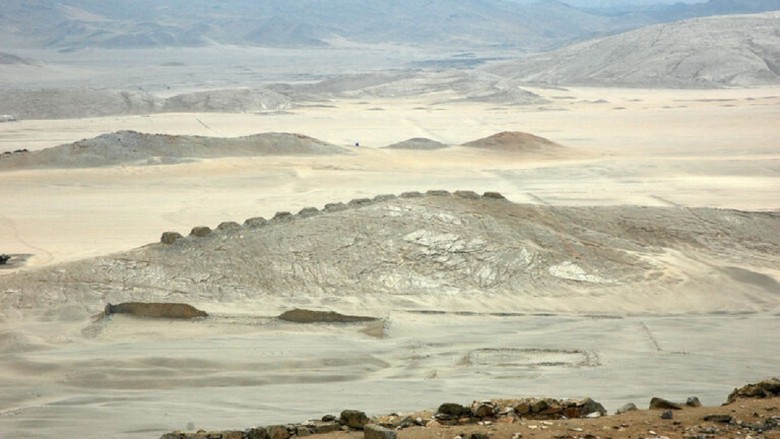
It wasn't just the walled structure that conveyed this impression. The way the buildings and their surrounding fortifications were designed strongly suggested a defensive or strategic significance.
Massive Fortifications
Think about it. You have large, solid walls surrounding three buildings. On one side, there are stone towers. Additionally, the site is situated on a ridge, providing an overview of the landscape.
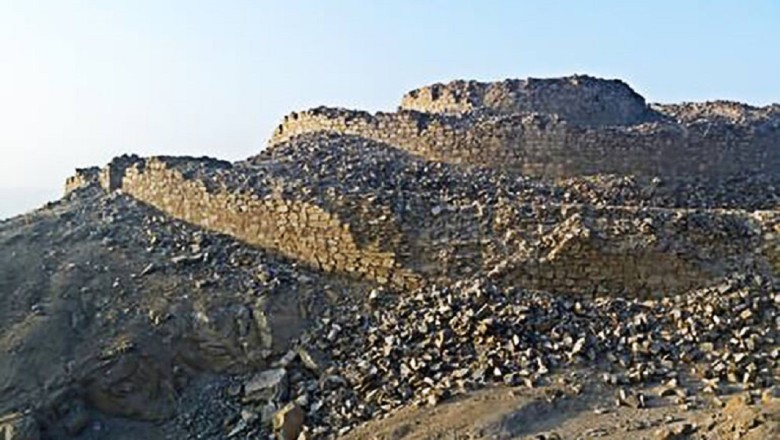
All these elements combined would make Chankillo a fortress that would be relatively easy to defend against potential attacks. At the time the towers were built, defense against enemies could have been a major consideration, especially in a region where tribal conflicts and territorial disputes were not uncommon.
Early Horizon
This time period - around 400 BCE - is known as the Early Horizon period. In various areas around Chankillo, there is evidence that people at that time constructed impressive fortifications. This indicates how conflict-ridden this part of Peru must have been during that time.
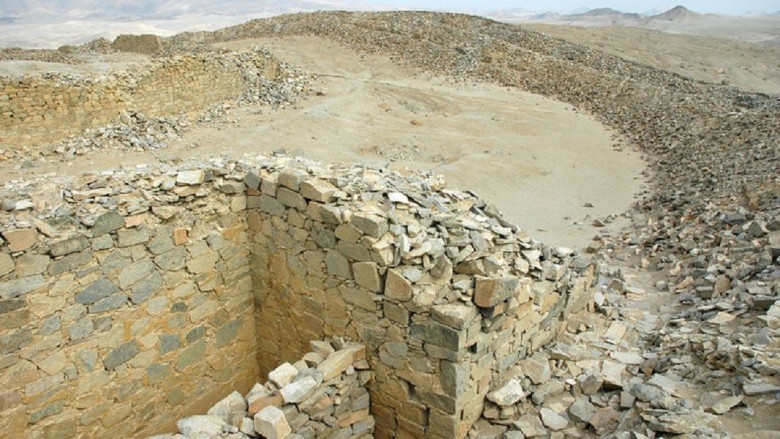
But there was something about Chankillo that didn't quite fit and raised many questions. The complexity and design of the site gave rise to many theories, but none seemed to solve the entire puzzle..."
Open Sesame
What perplexed archaeologists was that Chankillo couldn't function as a normal fortress - if it was even a fortress at all. A look at the three buildings clearly showed the experts that they could be easily breached by invading forces.
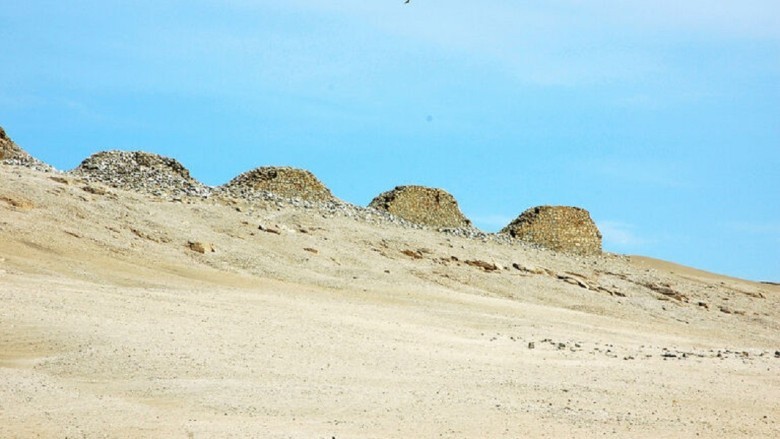
Despite the solid construction, the design obviously had significant weaknesses. The logic and purpose behind such a robust yet easily penetrable design left scientists puzzled, searching for deeper meanings and functions.
Coming and Going
Remember the three high walls surrounding the buildings? They actually had multiple entrances. The first wall had five entrances, the second had four, and the last provided three options to pass through.

This is hardly ideal when the actual aim is to prevent people from entering the buildings! These numerous openings made many archaeologists ponder what purpose they truly served and whether security was even the primary intention of the builders."
A New Theory
So perhaps the idea that Chankillo was an impregnable fortress was a bit exaggerated. Therefore, the experts developed a new theory about the purpose of this complex.

The first inspiration for this new idea apparently came when it was discovered that the buildings were remarkably well-preserved. This unexpected level of care and preservation suggested that Chankillo may have had a different, special significance to the people of that time.
Clean Report
It seems that this thought didn't occur to anyone until the beginning of the 21st century. Until that time, no one had really bothered to thoroughly examine Chankillo. However, this changed in 2001 when someone finally decided to take a closer look.

But what did it mean that the interior of the buildings was noticeably clean? This detail could have been a key indicator of the actual function and significance of the complex, one that went beyond simple military use.
Rituals
The experts believed that this aligned with what they had seen in other structures built by cults. This led the archaeologists to assume that there was actually a temple at the center of Chankillo. It also meant that some sort of ritual behavior must have taken place onsite.
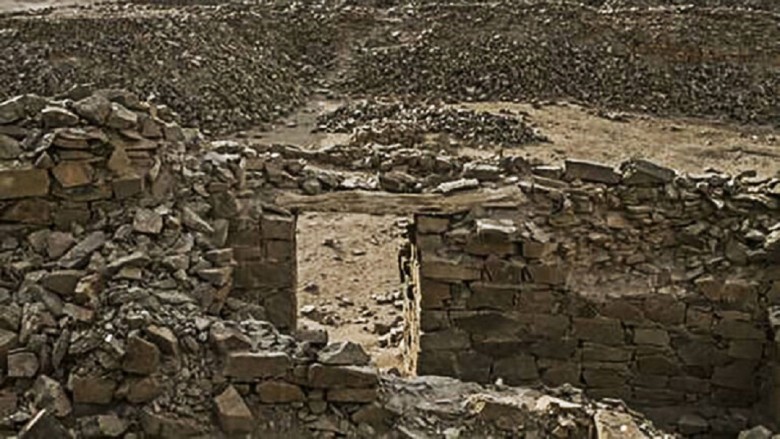
However, the problem was that no one knew exactly the beliefs or cult the people there followed, or which deity or concept they worshipped.
Unknown People
In 2013, Professor Brian Cox visited Chankillo for his BBC program Wonders of the Universe. The physicist described the people who built Chankillo 2,300 years ago as a civilization "about which we know almost nothing."
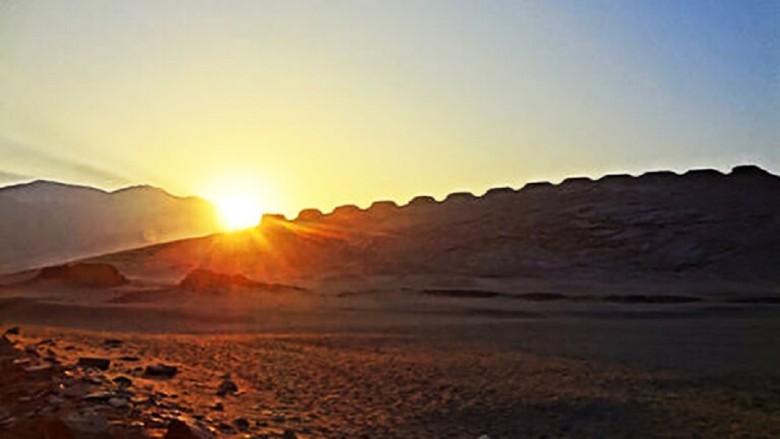
But if researchers know so little about a group of people, how could they then determine why these people built these structures? It was like solving a puzzle whose pieces had been scattered and forgotten over centuries.
No Trace
The details of this culture and any traces of their language are lost, Professor Cox continued. Therefore, anyone who attempted to study Chankillo had nothing else but the buildings and structures themselves for interpretation.

There simply was no way to determine who had built them. Fortunately, however, the buildings offered some clues. The mystery deepened further, but these architectural witnesses of the past could be the key to unlocking their secrets.
Pure White
According to Professor Cox, its walls were once gleaming white and covered with painted figures. The experts could determine this, said Cox, although everything except the smallest fragments of the decorations had disappeared.
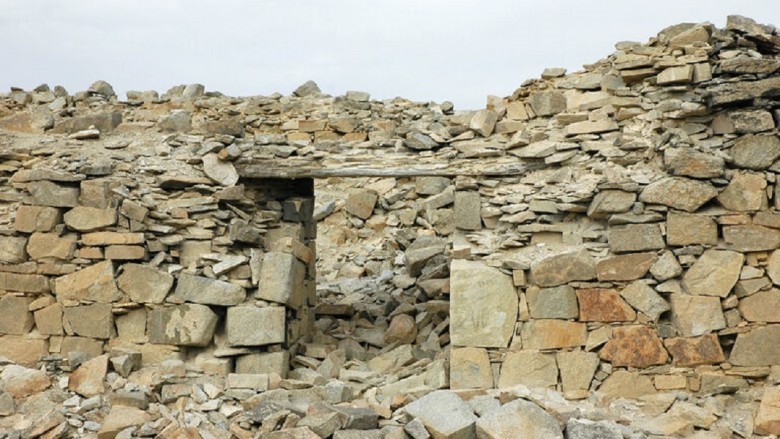
Nevertheless, what was left, combined with other details around the site, provided the experts with the necessary clues and evidence to uncover the truth. It was like assembling a historical puzzle, where each piece provided another hint to the story of Chankillo.
New Research
In his program "Wonders of the Universe," Professor Cox expressed, "If you stand in the right place, you can still experience the true purpose of Chankillo, just as it was on the day it was built."

Of course, he could make this confident claim in 2013 because two other experts had already published their final findings about the complex. It hadn't always been clear, but through years of research and investigation, they had finally deciphered the puzzle of Chankillo.
The Scientific Part
Dr. Ivan Ghezzi and Professor Ruggles were the driving forces behind the report published in the journal "Science" in 2007. During his discoveries, Dr. Ghezzi earned his Ph.D. in Anthropology from Yale University. Originally, he had visited Chankillo to study fortifications.
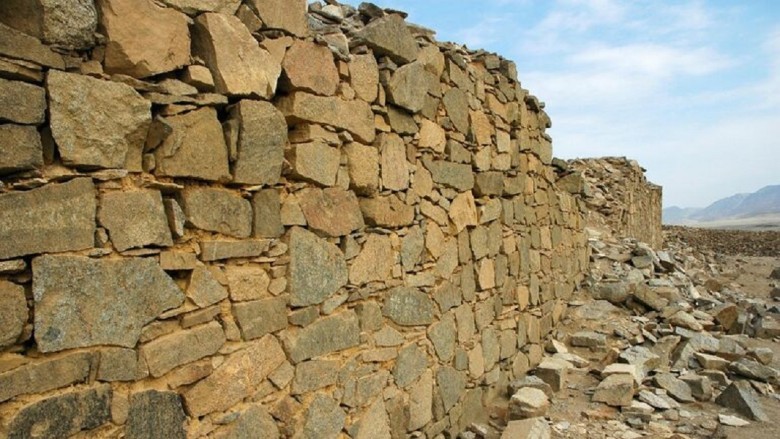
However, during his research there, he came across peculiarities and realized that something wasn't quite right. This unexpected puzzle drew him deep into the secrets of Chankillo.
New Discovery
Dr. Ghezzi's initial investigations took place in 2001. As you may recall, up until then, people generally believed that Chankillo was a fortress.

Yet, despite numerous theories, no one had found a satisfactory explanation for the existence of the 13 towers. However, this changed dramatically when the researcher began his work at the site and delved deeper into the mysteries of Chankillo.
First Shovel
Since the 19th century, there had been speculations that the arrangement of the 13 towers could serve as markers for the sun or moon, but nobody pursued these assumptions," Dr. Ghezzi told Yale News in 2007. However, the researcher recognized the opportunity before him and also felt the support of his colleagues and mentors.

"So we said, ‘Let's study it while we are here!'" explained the scientist, describing his motivation and the enthusiasm that drove him.
Quick Action
It didn't take long for Dr. Ghezzi's instincts to lead to surprising results. "In the first few hours of our measurements, we recognized the significance and the true nature of the towers," the scholar reported to The New York Times in 2007.
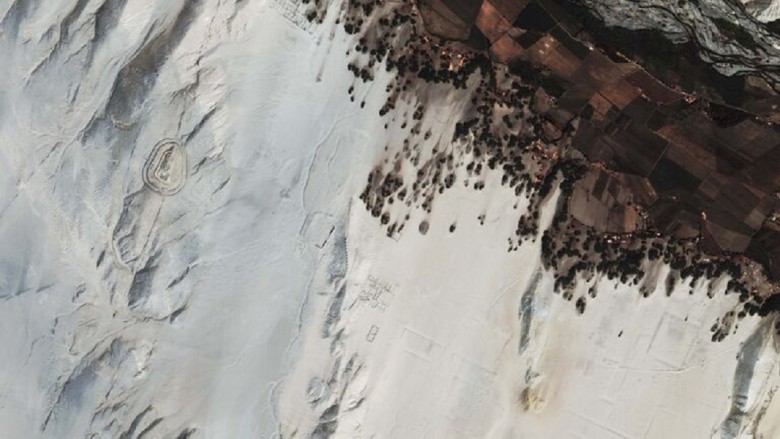
Although it took six more years for the final work to be ready for publication, Dr. Ghezzi was convinced of his findings. His breakthrough in this research was not just a matter of technique, but also the right intuition at the right time.
Solar Calendar
Dr. Ghezzi focused his attention on two specific points located within the previously mentioned sturdy walls and buildings. These points are about 230 meters away from the 13 towers and are positioned to the east and west of them.
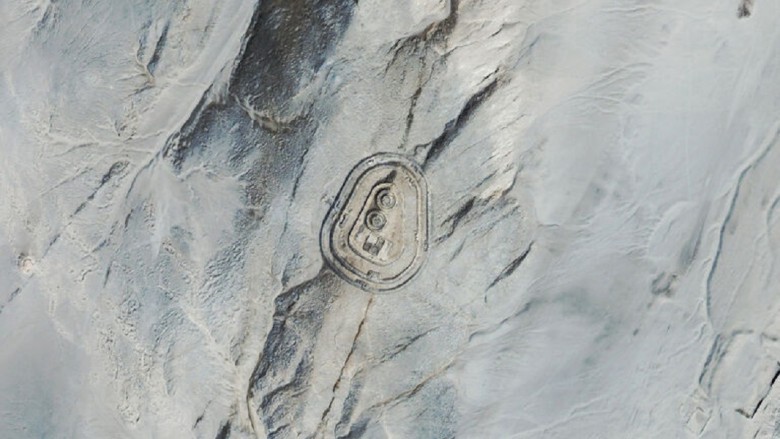
Even after the researcher's initial measurements, it became evident that these points were observation sites of great significance. The precise positioning of these locations within the structure left no doubt that they played a special role within the complex. It was an indication that Chankillo was much more than just a military outpost.
Attention
But what exactly had the ancient civilization that lived here observed? According to Dr. Ghezzi's investigations, the positions of the 13 towers nearly perfectly aligned with the points where the sun rises and sets throughout the year. Such a coincidence could not be accidental.

This realization convinced the scientist that the towers were placed there to observe the changing seasons. It was an impressive architectural feat of the time, accurately capturing the movement of the sun throughout the year.
Rising and Falling
Here's how it works: Imagine standing at the observation point on the western side of the towers. As you stand there and the early morning approaches, the sun slowly rises above the horizon.

Now all you have to do is observe and note where the sun appears in relation to the towers. It sounds simple, but this process provides deep insight into the rhythm of nature and the astronomical knowledge of the ancient culture.
Calendar Men
It is actually both simple and ingenious. By observing the position of the sun from the observation point, one can determine exactly which season is prevailing. Keep in mind that in 400 BC, there were no smartphones to quickly check the date.

If the sun appears at the far right point of the towers, that means it is the summer solstice in Peru. This was a sophisticated method through which ancient cultures could accurately track the changing seasons.
Winter Winner
And if the sun rose at the opposite end of the towers, then one would know it is the winter solstice. During the rest of the year, the sun would rise at different points along the towers. So, these 13 towers actually function as a large calendar.
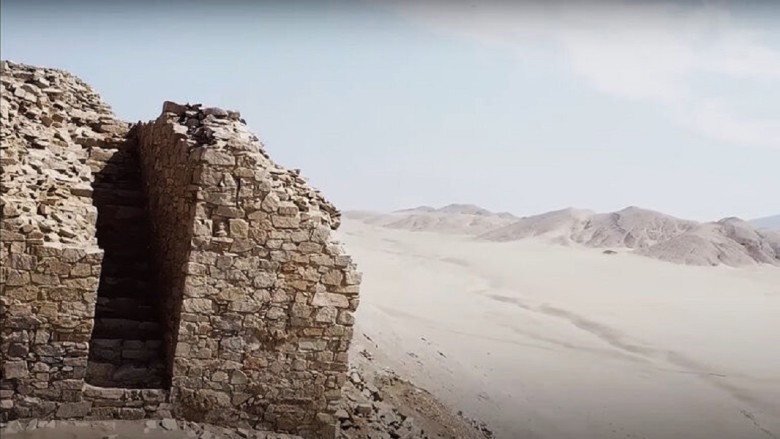
This realization was groundbreaking for several reasons. It changed our perception of how advanced and innovative this ancient civilization was in terms of their observation of the sky and timekeeping.
Great News
This means that the Chankillo Solar Observatory is the oldest known example of this type of structure that we have discovered so far. It also differs from other solar observatories in that it is capable of determining time over an entire year. Archaeological research in Peru continuously expands our understanding of the origin of civilization in America, said Dr. Ghezzi to Yale News.

His discoveries at Chankillo represent one of the most remarkable new findings in this field. It is astonishing how advanced ancient peoples were in terms of astronomy and timekeeping.
Early Humans
Dr. Ghezzi also revealed that Chankillo is older than the observatories found in Europe - by about 1,800 years. Additionally, it is approximately 500 years older than any similar structures built by the Mayans. While experts were aware of comparable methods used by our ancestors to measure time, they had no idea how far back these practices actually began.
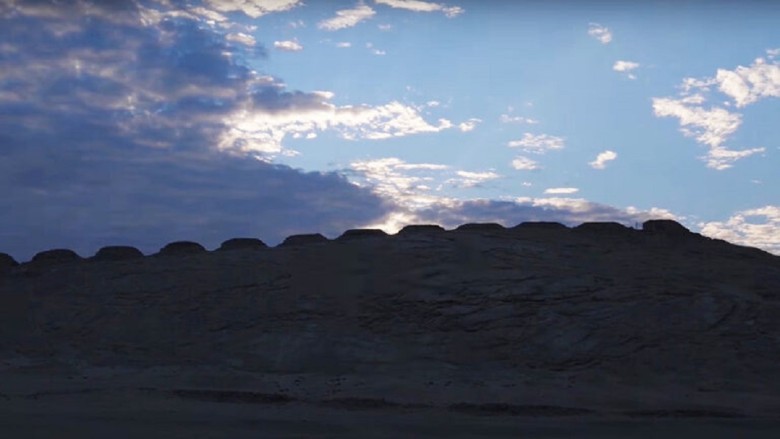
The extent of this discovery showed that the cultures in South America were much more advanced in terms of astronomical observations and calendrical systems than previously believed. It is fascinating to see how deep the roots of such knowledge run in history.
Reap what you sow
Why did people do this? Well, it would certainly have been helpful for civilizations to know exactly when to plant different seeds and crops throughout the year. It would have also allowed them to accurately determine when to honor religious festivals that aligned with the seasons.
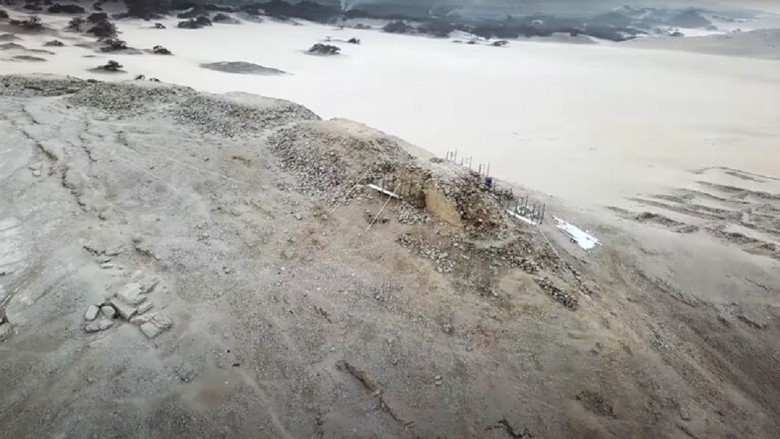
But the researchers also recognized that there could be another, deeper purpose. Perhaps people weren't just seeking practical knowledge, but also a connection to the cosmos to understand their place in the universe.
Power of the Sun
Experts were aware of the Inca king who explicitly used the sun to make political decisions. He apparently did this because he saw the sun as a deity - and considered himself a direct descendant of that deity. Considering that the Inca Empire arose much, much later than the Chankillo Observatory, this could provide new insights into the earlier complex.
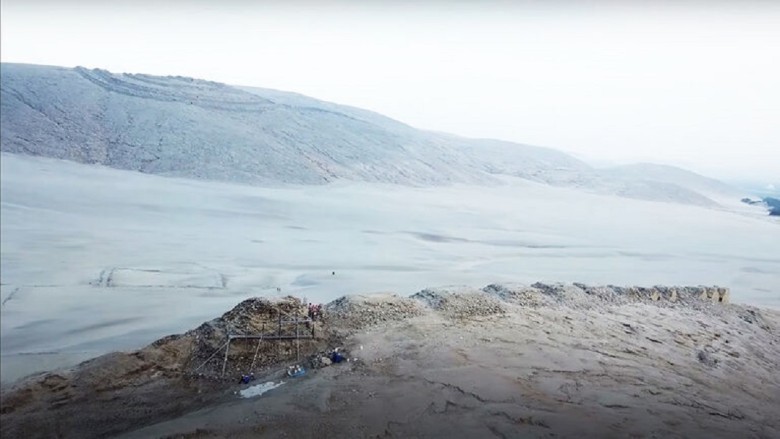
It suggests that long before the Incas, such religious and political relationships with the sun may have existed, forming the basis for future cultures.
Sun Gods
Dr. Ghezzi and Professor Ruggles believe that the 13 towers could have been a deliberate message to the inhabitants of the region. Essentially, this message stated that whoever owned or operated the towers could determine the fate of all others.
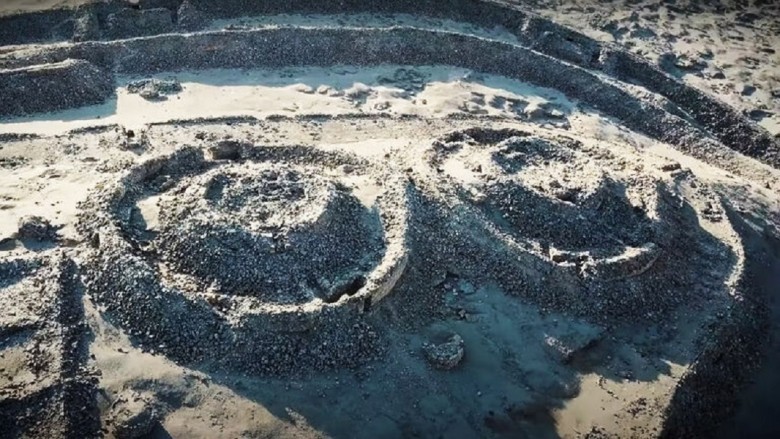
It could have appeared as if they were proclaiming I have control over the sun! At that time, such a sign would have been an impressive and intimidating demonstration of power and influence.
Revealing
Even today, the site exudes the same power as it did in the past. Even an experienced researcher like Professor Ruggles was overwhelmed by Chankillo's impressive presence.

"I am used to being disappointed when visiting places that are supposedly ancient astronomical observation posts," the scientist explained to Yale News. "But Chankillo was different from other sites and exceeded all my expectations."
Extraordinary Power
Chankillo is one of the most exciting archaeoastronomical sites I have come across," Professor Ruggles continued. He found it hard to believe that the solar observatory had not been discovered many years earlier.
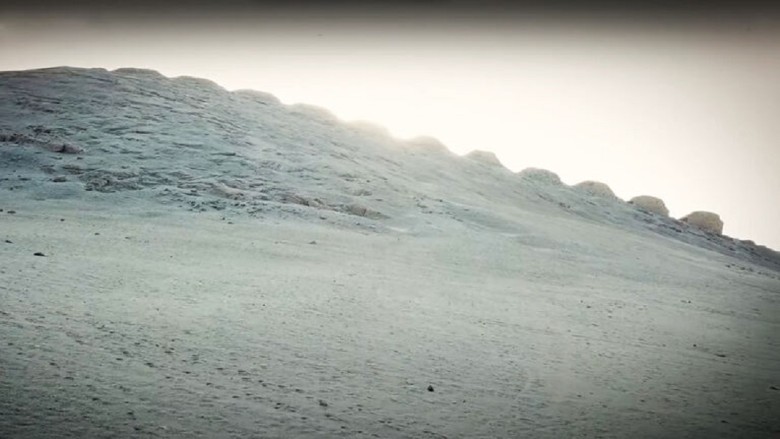
But now that we know the true function of the structure, we can begin to understand the lives of these long-forgotten people and delve deeper into their culture and scientific achievements. It opens a window into a past world that is both mysterious and fascinating.
Power Struggle
Professor Ruggles told the BBC that the size of the observation points raises an interesting question. He said that the point west of the towers could not have been very large. In his estimation, at a certain point, only three people at most could have observed the sunrise from there.

This fact provides deep insight into how exclusive and perhaps sacred this observation site may have been. It raises questions about who these privileged observers were and what special role they played in their community.
Ritualistic
All indications suggest that there was a formal or ceremonial approach to this point and that special rituals took place there," Professor Ruggles explained. This means that not just anyone could go to the observation point and determine the season. This task would likely have been reserved for someone who held a very powerful position in the civilization.

It underscores the importance and respect that the community had for this place and the associated tasks. It was much more than just a simple astronomical observation; it was a sacred ritual deeply rooted in the culture and belief of these people.
Extraordinary Power
Chankillo is one of the most exciting archaeoastronomical sites I have come across," Professor Ruggles continued. He found it hard to believe that the solar observatory had not been discovered many years earlier.

But now that we know the true function of the structure, we can begin to understand the lives of these long-forgotten people and delve deeper into their culture and scientific achievements. It opens a window into a past world that is both mysterious and fascinating.
Power Struggle
Professor Ruggles told the BBC that the size of the observation points raises an interesting question. He said that the point west of the towers could not have been very large. In his estimation, at a certain point, only three people at most could have observed the sunrise from there.

This fact provides deep insight into how exclusive and perhaps sacred this observation site may have been. It raises questions about who these privileged observers were and what special role they played in their community.
Insistence on Ceremony
Professor Ruggles explained to the BBC that it was likely a priest who observed the sunrise or sunset while the crowds celebrated in the adjacent plaza. "Even though the ceremonial gatherings could see the sun, they would not be able to observe its rise from this particularly important vantage point."

Access to this special place was the true sign of power in antiquity. It was not just the physical position that mattered, but also the knowledge and ability to interpret the sun and its movements and communicate their significance to the community. It was an office that bestowed both respect and authority in society.
Modern Thoughts
Even today, one can feel a bit of that ancient power when visiting the site. After all, the sun rises and sets almost the same way it did 2,300 years ago. So, if you ever find yourself in the deserts of Peru without your modern technology, like an Apple Watch, you'll know exactly how to determine the season!
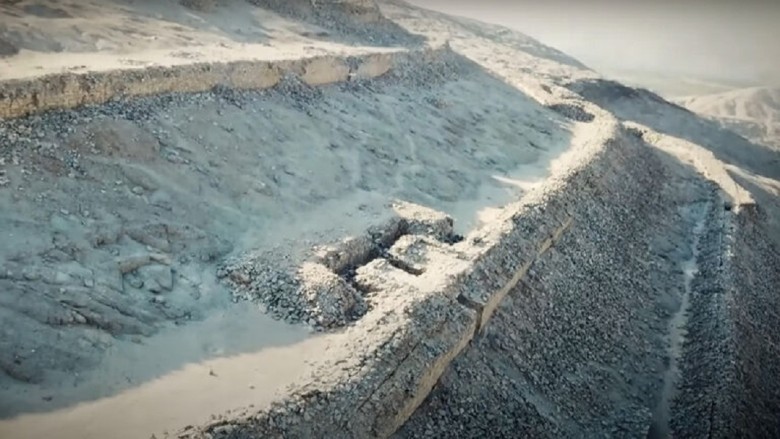
And who knows, if you pause for a moment and let your eyes sweep over the desert sand, you might come across something truly incredible. This place is not just a testament to the past, but also a bridge between the ancient and the modern world.
Strange Carvings
Drones capturing impressive images of the underlying terrain from nearly 30 meters above the sandy ground revealed a surprise when archaeologists carefully analyzed the footage: traces of ancient geoglyphs engraved into the rock many centuries ago.
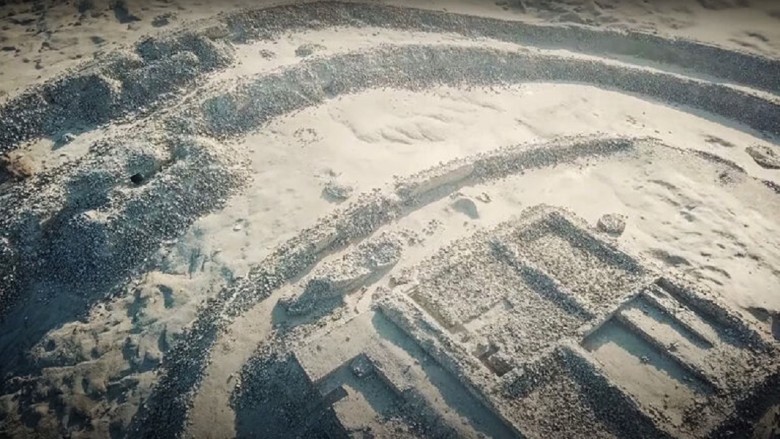
But what lies behind these puzzling drawings? What message or meaning could they have held for the people of that time? Experts were faced with another great mystery to unravel.
The Nazca
The Nazca emerged as early as 100 BC, a people who once thrived in southern Peru. Indigenous to the valleys of the Ica River and the Rio Grande de Nazca, they were known for their advanced artistic and technological abilities.

Even today, long after their culture has disappeared, their memory lives on in the place names of their former homeland. They left behind a cultural heritage that continues to fascinate historians and laypeople, making them an unforgettable part of Peruvian history.
Advanced People
According to experts, the Nazca were an agricultural society that engaged in peculiar practices such as skull manipulation - a technique used to deform the skull of a young child. Despite such unusual customs, they were considered very advanced and cultivated for their time.
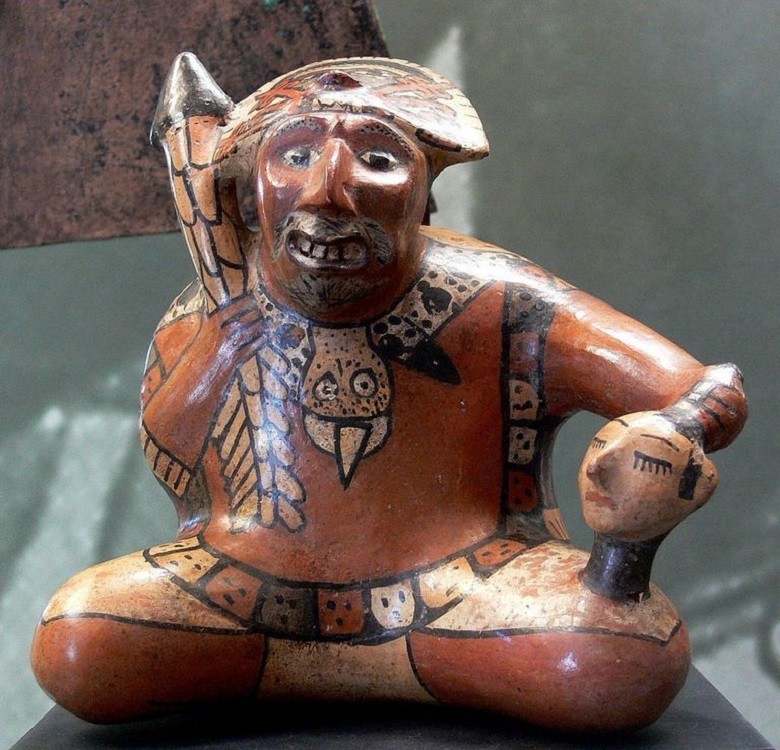
In fact, they built an aqueduct system that is still used in the region today because of its efficiency and robustness. This underscores their impressive technical competency and the sustainable legacy they left behind.
Incredible Artworks
In addition to creating impressive ceramics, the Nazca were also masters of textile art, creating complex and detailed textile patterns. But it was their fascinating geoglyphs that would secure them a permanent place in history for centuries to come.
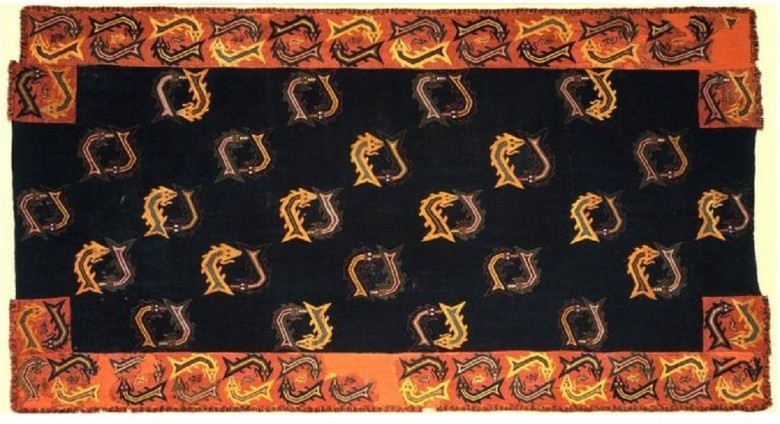
These artworks, etched into the landscape, remained as witnesses of their cultural achievements, even though their civilization had vanished by 750 AD. To this day, these monumental drawings attract researchers and tourists alike, serving as evidence of the impressive cultural heritage of the Nazca.
The Nazca Lines
Today, the ground of the Nazca Desert in Peru is crisscrossed with hundreds of markings known as the Nazca Lines. These impressive designs span nearly 20 square miles and were created by carving shallow indentations into the ground.

Some of these drawings appear as seemingly endless lines stretching across the landscape, while others are far more elaborate, evoking awe in those lucky enough to behold them. It is these more complex designs that truly showcase the creativity and skill of the ancient Nazca culture.
A Hummingbird, a Monkey, and Even a Jaguar
Among the figures formed by the Nazca Lines are over 70 depictions of animals, including a hummingbird, a monkey, a dog, a lizard, and a jaguar. Additionally, there are patterns arranged to depict various flowers and trees. However, these intricate images are not immediately discernible to visitors venturing into the Nazca Desert.

The reason for this is deep and mysterious. It is this mystique that has fascinated and challenged researchers and history enthusiasts for years.
Why Were They Created?
Curiously, the intricate patterns of the Nazca Lines can only be fully appreciated from the air. While some of the designs are visible from higher points in the region, their nature has led many to speculate about who they were created for.
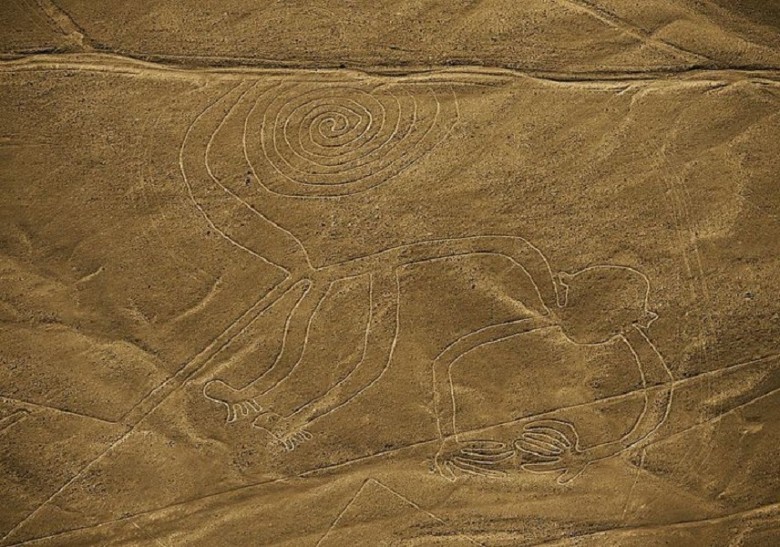
Did the ancient people of Peru possess the ability to fly long before the Wright brothers made their first attempts at flight? Or is there a even more mysterious phenomenon behind these drawings that we have yet to understand? It is this uncertainty that continues to raise questions and pique curiosity.
The Probable Theories
According to most experts, the Nazca Lines were likely created for religious or ceremonial purposes. Some believe they were designed to be viewed by gods in the sky, while others speculate they were meant to align with the stars above. Interestingly, this technique can also be found in other places, such as the ancient monument Stonehenge in southern England.
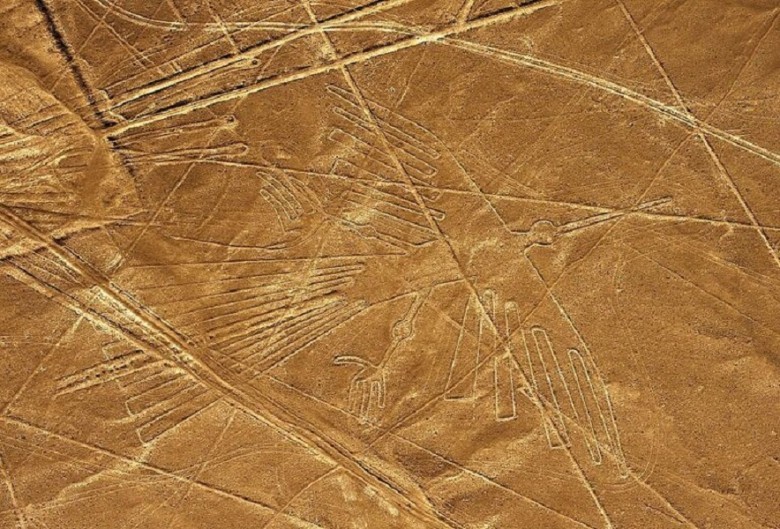
It is fascinating to see how different cultures used similar methods to express their reverence for the heavens and stars. It remains a testament to the deep spiritual connection our ancestors had with the universe.
Captivating Visitors
Meanwhile, others have dismissed these complex explanations and claimed that many of the patterns are simply ancient irrigation channels. Regardless of the true meaning behind the Nazca Lines, there is no doubt that their mysteries have captivated visitors to the Peruvian desert for generations.
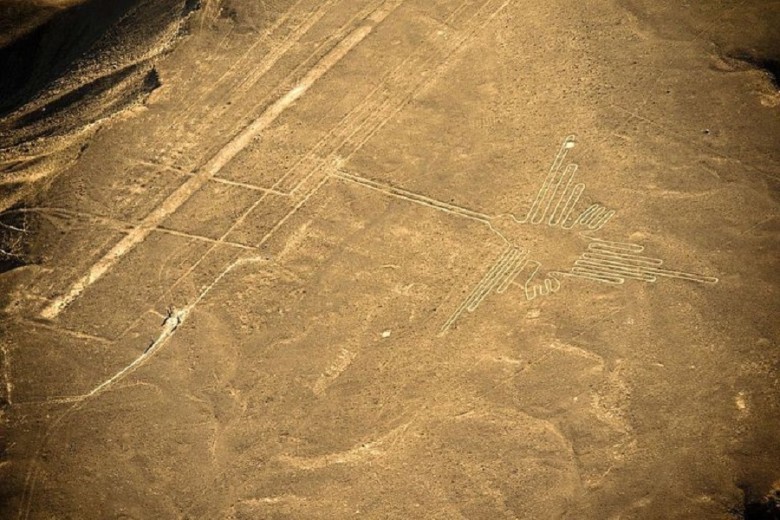
These impressive drawings are not only proof of the skill and ingenuity of a long-lost civilization, but also a testament to their ability to leave lasting enigmas behind. Anyone who has the opportunity to visit them cannot escape the charm and fascination of these ancient artworks. It remains to be seen if we will ever decipher their true secrets.
Runways for Extraterrestrials?
In fact, some have even claimed that the Nazca Lines could be evidence of extraterrestrial life. In the 1960s, radical theories emerged suggesting that the designs were actually runways created to guide alien visitors to Earth. These theories sparked much speculation and controversial discussions, capturing the imaginations of many who pondered the possibility that our ancestors may have been visited by beings from outer space.
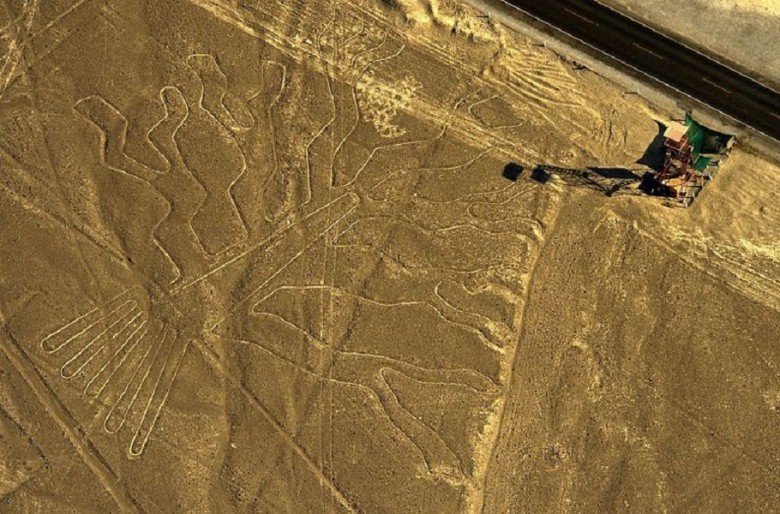
However, as expected, no scientific evidence has been found to support such claims. Nevertheless, the mystery of the Nazca Lines remains a fascinating enigma that continues to captivate both scientists and laypeople.
Fragile Lines
The Nazca Lines, mysterious and fascinating geoglyphs in the heart of Peru, remain one of the country's most significant tourist attractions, drawing thousands of fascinated visitors from around the world each year. They are not only an impressive testament to past cultures but also, due to their uniqueness and fragility, have been recognized as a UNESCO World Heritage Site, underscoring their global importance and invaluable cultural value.
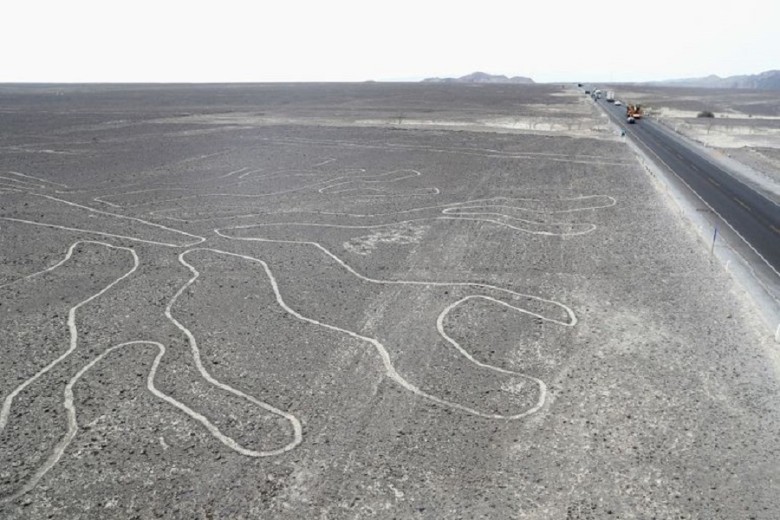
However, despite this impressive and prestigious status they hold on the global heritage stage, these ancient artworks have unfortunately not always been fully protected from the various damages and threats posed by both humans and nature. It becomes evident that even the recognition as a World Heritage Site does not always suffice to safeguard such precious monuments from the whims of time or negligence. Any damage to these lines is an irreparable loss for humanity and its history.
The Greenpeace Controversy
In 2014, the region made headlines when Greenpeace activists conducted a protest near the Nazca Lines. They unfurled a banner promoting renewable energy, potentially causing damage to the geoglyphs.

Although the organization assured that they acted responsibly, critics accused them of entering a protected area.
Inflicted Damage
When the Nazca Lines once again came into the global spotlight, it became impossible to ignore the significant damage these impressive geoglyphs had suffered over time. It was evident that they had been damaged not only by the natural processes of time but also by human activities. In particular, illegal settlers seemed to have left their mark, and even participants in the internationally renowned Dakar Rally appeared to have unintentionally caused damage to the delicate geoglyphs.
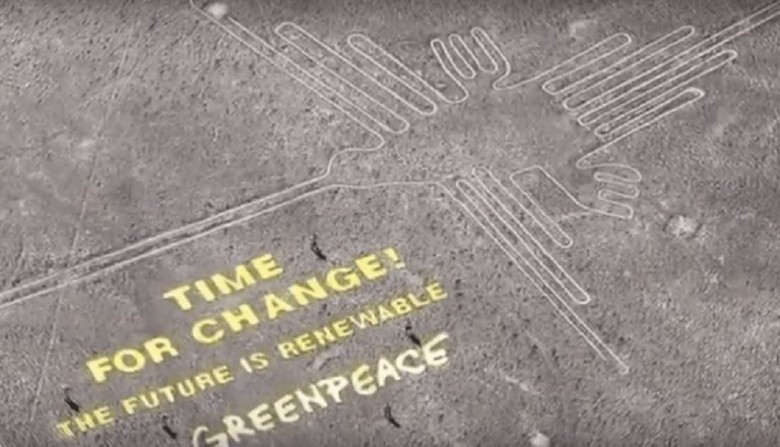
Given this critical situation and the cultural significance of the Nazca Lines for all of humanity, the US government decided to take action. They provided significant funding to support restoration efforts and preserve the lines for future generations.
The Man Who Knows
With financial aid and support from the US, Peruvian authorities had the means and resources to engage renowned archaeologist Johny Isla. Isla, who had developed a deep passion and expertise for the Nazca Lines since the 1990s, was entrusted with this task. In a fruitful collaboration with Markus Reindel from the German Archaeological Institute, they combined their knowledge and skills.
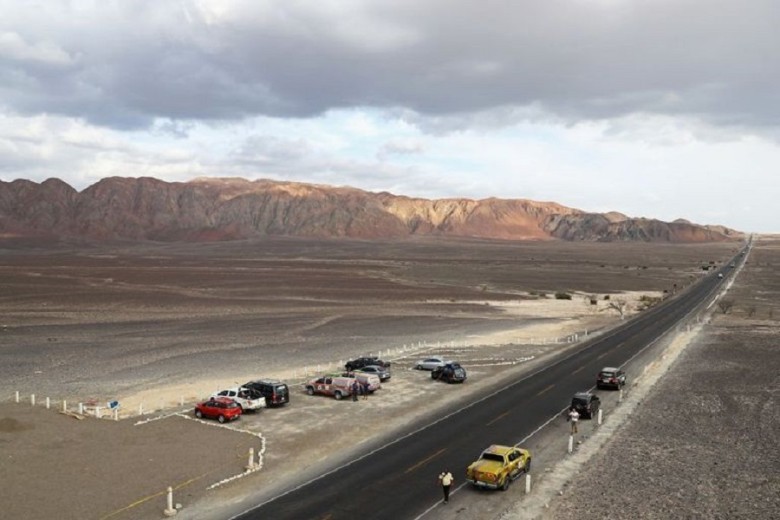
Together, they dedicated decades to the challenge of meticulously researching and documenting the impressive and enigmatic geoglyphs of the Nazca Desert. Their joint efforts significantly contributed to the current understanding and appreciation of these historical artworks.
Much Left to Discover
Luis Jaime Castillo Butters, a close colleague of Isla, emphasized that archaeology in Peru comes with unique and complex challenges. Despite the sheer number of around 100,000 historically and culturally significant sites in the country, archaeologists have only managed to thoroughly explore about 5,000 of them on-site. This lack of investigation is even more pronounced when considering aerial imagery.
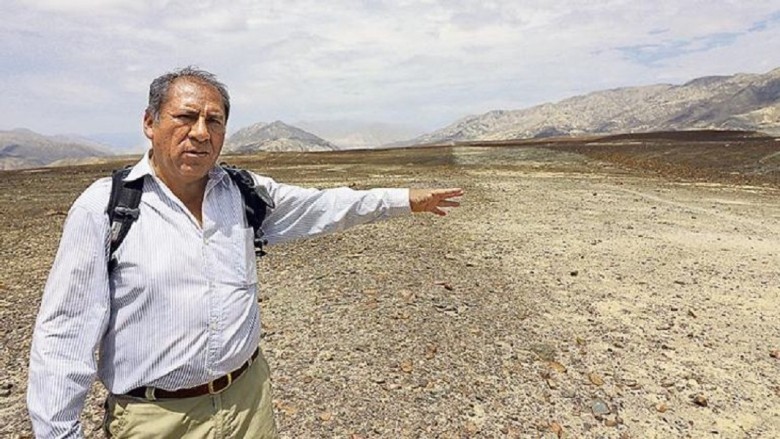
Only a fraction of these sites has been observed from an aerial perspective. Yet, these aerial images are crucial, especially when it comes to locating and documenting impressive geoglyphs like the Nazca Lines. Considering these circumstances, it becomes apparent that there is vast untapped potential lying within the Peruvian landscape.
A Step in the Right Direction
In 2017, the exploration of the geoglyphs in Peru took a decisive turn. In this transformative year, Isla and Castillo forged a fruitful and promising partnership with the GlobalXplorer initiative. This remarkable project, launched by renowned archaeologist Sarah Parcak from the University of Alabama at Birmingham, had already gained significant recognition in 2016, receiving a prestigious TED Talks prize.

The collaboration of these experts and the integration of state-of-the-art technology promised to open up new dimensions in the exploration and preservation of the Nazca Lines. It was a sign that the future of archaeology in Peru could be greatly enhanced through such international collaborations and technological advancements.
Volunteer Helpers
Sarah Parcak, through the GlobalXplorer initiative, has an ambitious goal in mind – to open up and make the fascinating world of archaeology accessible to the public. To achieve this, interested volunteers in this special project are not only trained but actively involved in research work. As citizen scientists, they have the opportunity to examine a vast collection of satellite images from an aerial perspective.

Their task is to identify signs of looting or potentially undiscovered archaeological sites on these images and mark them accordingly. This participatory approach has the potential to enrich archaeology through the collective eyes of many and significantly increase its


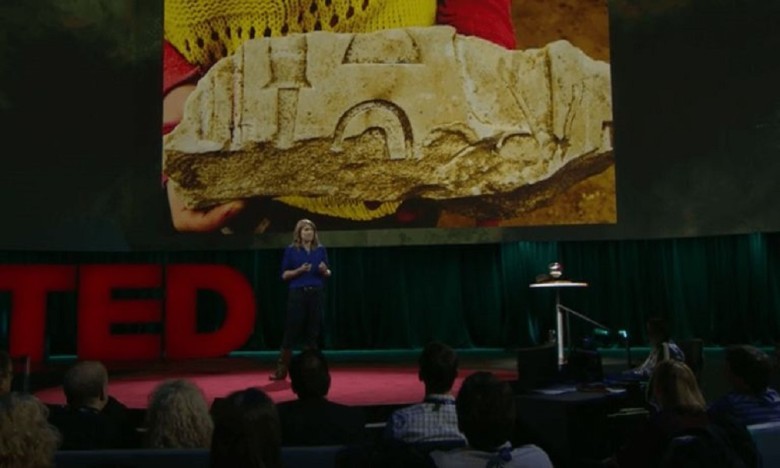









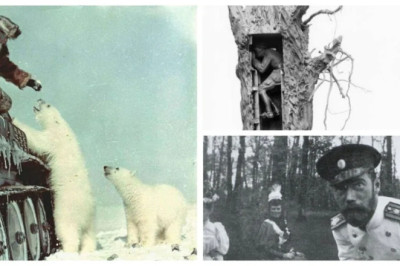


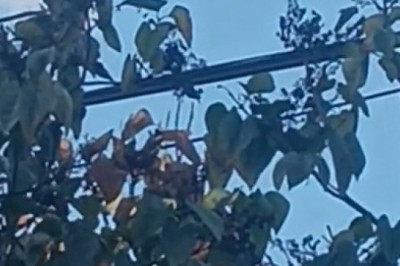





Comments
0 comment